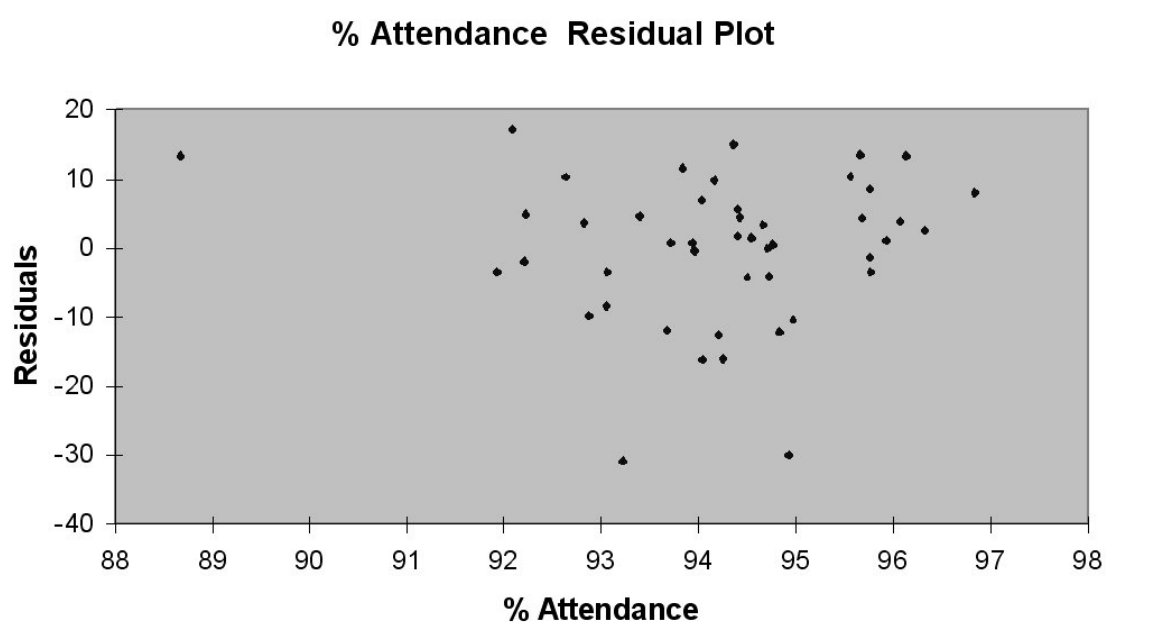TABLE 15- 8
The superintendent of a school district wanted to predict the percentage of students passing a sixth- grade proficiency test. She obtained the data on percentage of students passing the proficiency test (% Passing) , daily average of the percentage of students attending class (% Attendance) , average teacher salary in dollars (Salaries) , and instructional spending per pupil in dollars (Spending) of 47 schools in the state.
Let Y = % Passing as the dependent variable, X1 = % Attendance, X2 = Salaries and X3 = Spending.
The coefficient of multiple determination (R 2 j) of each of the 3 predictors with all the other remaining predictors are,
respectively, 0.0338, 0.4669, and 0.4743.
The output from the best- subset regressions is given below:
Following is the residual plot for % Attendance:
Following is the output of several multiple regression models:
-Referring to Table 15-8, which of the following predictors should first be dropped to remove collinearity?
Definitions:
Hearsay Evidence
Statements made outside of court that are offered in court to prove the truth of the matter asserted, which are generally inadmissible unless they fall under an exception to the hearsay rule.
Statement of Defence
A legal document filed in court by the defendant, outlining their defense against the claims made in a lawsuit.
Counterclaim
A legal claim brought against the plaintiff by the defendant in a lawsuit, essentially a reverse lawsuit within the original legal action.
Writ of Summons
A legal document issued to initiate court proceedings, formally notifying the defendant of the action against them and requiring their response.
Q3: The Paasche price index has the disadvantage
Q41: Referring to Table 17-2, what is the
Q47: The control limits are based on the
Q65: Referring to Table 17-1,what is the opportunity
Q68: The_ (larger/smaller) the value of the Variance
Q86: The minimum expected opportunity loss is also
Q96: Referring to Table 18-7, an R chart
Q112: Referring to Table 18-1, which expression best
Q181: Referring to Table 13-7, which of the
Q254: Referring to Table 14-3, to test for